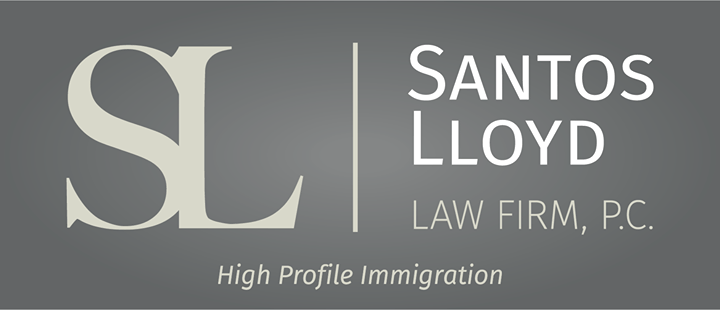Everything an Entrepreneur Needs to Know
Angelica Rice • December 9, 2021

Click here to read this article in Portuguese and Spanish
E-2 visas are one of the most popular business visas for entrepreneurs wanting to come start a business in the United States.
They are advantageous because there is no quota for them (as long as one is eligible for the visa it can be granted at any time), they can be renewed or extended an unlimited amount of times, and the investment cost is far less than the EB-5 visa, far less than $500,000. Lastly, the number of employees the business is expected to support for an E-2 visa is about 3-4, not a minimum of 10 like the EB-5. The only drawback is that they are not a direct path to a green card.
Is the E2 visa right for you? Keep reading to find out.
What is an E-2 visa?
The E-2 visa is a Treaty Trader and Investor Visa for the United States. It is a US non-immigrant visa category, and it is issued for individual investors or investing companies from countries that have a treaty with the United States. The investment can be in any industry or business.
Does my country have a treaty with the US?
In order to be eligible for an E-2 visa, your home country must have a treaty with the United States that allows you to be eligible for the visa. A complete list of treaty countries can be found on the Department of State website, see the link below.
Does my country have a treaty with the US?
In order to be eligible for an E-2 visa, your home country must have a treaty with the United States that allows you to be eligible for the visa. A complete list of treaty countries can be found on the Department of State website, see the link below.
What are the eligibility requirements for an E-2 visa?
To be eligible for an E-2 visa, there are several criteria that you must meet, such as:
- If you are an individual investor, you must be the national of a country that has an investment treaty with the US.
- If the applicant is a company, it must be owned at least 50% by a treaty investment country.
- If a company is sending an employee with an E-2 visa, the employee must be a national of a treaty investment country, as well as be in a supervisory, managerial, executive, or specialized knowledge position (essential employee).
- The investor (individual or company) must have the intent to invest a substantial amount of capital in an existing or new bona fide business. A bona fide company is a real company that produces products or services and is profitable.
- The investor (individual or company) must ensure that the business generates more profit than to just make a living. New businesses are exempt from the requirement of marginal profit, but should meet this requirement within five years.
- The investor (individual or company) must have the goal to develop the business further through that investment.
- The investor (individual or company) must place the funds in a bank account or an agent until their visa is approved.
- The investor must have the intention of returning to their home country once their work is completed.
The last requirement is one of the most important, as most people tend to run into issues with this as their stay in the United States continues. This especially becomes an issue and is a potential violation of the E-2 visa status, when one desires to apply for an EB-2 visa while still in the US. Please visit our related article on EB-2 business visas
by Kyle Huffman
for more information on EB-2 visas.
The target investment amount for an E-2 visa is usually between $100,000 - $200,000, however, under certain circumstances, a smaller investment is sometimes sufficient to meet the requirement. The reverse is also true, as an investment larger than $100,000 - $200,000 certainly meets the requirement, should the business be one that needs such funding.
How long is my E-2 visa valid for?
The length of the validity of your E-2 Visa depends on your nationality and can range from 3 months to 5 years. This is also known as the ‘reciprocity period’. Essentially, the validity period of the E-2 Visa is established by the Treaty between your country and the United States.
The validity period is the timeframe the E-2 Visa is issued for: until your E-2 Visa expiration date you will be allowed to enter the United States.
How long may I remain in the United States after I enter with my E-2 visa?
This is known as the “period of stay”, which is different from the “validity period” mentioned above. The period of stay is the length of your stay in the United States regardless of your E-2 visa validity period. The period of stay will be assigned upon your arrival in the United States and for the E-2 Visa is going to be 2 years. If you wish to remain in the United States longer, you must either renew or extend the period of stay of your E2 Visa.
What is the difference between Renewal and Extension?
The difference lies in whether one plans to remain in the United States to extend their visa, or if they are willing to travel back to their home country and renew their visa at the consulate.
Should you choose to leave the United States and reenter, your E-2 visa will automatically be renewed for another 2 years.
If you wish to remain in the United States and extend your E-2 visa, you must file an I-539 application with USCIS. Extensions are granted in 2-year increments and can be extended as many times as the investor wants. Extensions will be granted so long as the investor continues to meet all the eligibility requirements for the E-2 visa and continues to prove their intent to return to their home country.
If an E-2 investor becomes eligible for another kind of visa, they may file for a change of status with USCIS.
Can I include my dependents on an E-2 visa?
Yes. Dependents include the spouse and unmarried children under 21 years old of the primary visa holder. They may apply at the same time as the primary visa holder or later on after the E-2 visa has already been granted.
With an E-2 visa, dependents are allowed to study and the spouse is allowed to work. As of November 12, 2021 an E-2 spouse’s ability to work is incident to their E-2 status. This means that if an E-2 spouse has the documents to show that they are in valid E-2 status (i.e. an E-2 approval notice and valid I-94), they may work without having to file an application for employment authorization (Form I-765). If the spouse still wants a physical EAD card and wants to have documentation to show the work authorization and their identity, they may file an I-765 application but they do not have to.
If the dependents want to extend their stay, they must file an I-539 application. They do not get automatic renewals if they leave the US and return. Additionally, if the primary visa holder changes their status, the dependents also become eligible for change of status.
What is the processing time for an E2 visa?
Processing times vary depending on whether you are applying at a consulate or within the United States with USCIS. If applying with USCIS, processing time is usually between 3-5 months. For the most up to date processing times, please visit the USCIS processing times webpage below.
If applying at the consulate, the processing time varies depending on the country you are applying in.
How many times can I enter and exit the United States using my E-2 visa?
Whether an E-2 visa is issued for a single entry or multiple entries, is dependent on your country’s treaty with the United States, specifically the reciprocity table on the State Department Website. See the link below.
If you would like to know more about applying for an E2 visa, please contact Santos Lloyd Law Firm and our talented team of experienced immigration attorneys will be happy to assist you!
Similar Posts

As an immigration law firm, we regularly assist highly skilled professionals working in the U.S. on temporary work visas such as H-1B who are seeking a path to permanent residency. For many of these individuals, the EB-2 and EB-3 employment-based green card categories are the most pursued—and frequently misunderstood—routes . While both are viable pathways to permanent residency, they differ in meaningful ways that can significantly impact the timing, eligibility, and overall strategy of your case. The EB-2 category is intended for individuals who either hold an advanced degree or demonstrate exceptional ability in their field . Most applicants qualify by having a master’s degree (or higher), or a bachelor’s degree accompanied by at least five years of progressive experience in their profession. There is also a subcategory within EB-2 known as the National Interest Waiver (NIW), which allows qualified individuals to self-petition without employer sponsorship if their work substantially benefits the United States. This route is especially relevant for researchers, entrepreneurs, and professionals in high national interest or mission-critical fields. In contrast, the EB-3 category includes professionals with a bachelor’s degree as well as skilled workers with at least two years of training or experience . While the educational threshold for EB-3 may appear less rigorous, the process itself is equally structured. One key distinction between EB-2 and EB-3 lies in the requirements of the job being offered, not just the applicant’s own credentials. For example, if a position requires only a bachelor’s degree, even a highly qualified candidate with a master’s degree may still fall under EB-3. Regardless of which category applies, most employment-based green card cases begin with the PERM labor certification process . This is a formal procedure overseen by the U.S. Department of Labor, in which the employer must test the labor market and demonstrate that there are no able, willing, qualified, and available U.S. workers for the position. The employer must also agree to pay the prevailing wage as determined by the Department of Labor. This step is both mandatory and highly detail-sensitive; inaccuracies in the job description, recruitment steps, or wage determination can lead to significant delays or even denials. Once PERM certification is approved, the employer files Form I-140 , the Immigrant Petition for Alien Worker. This petition confirms that the employee meets the requirements for the offered position under either EB-2 or EB-3, and that the employer is financially capable of providing the job as described. If the employee’s priority date—which is based on the date the PERM was filed—is current according to the Department of State’s Visa Bulletin, the individual may then file Form I-485 to adjust their status to lawful permanent resident. One of the more nuanced aspects of this process involves understanding how priority dates and visa backlogs affect the timeline. For applicants from countries with high demand, such as India or China, significant delays are common—particularly under EB-2. Paradoxically, there are times when the EB-3 category moves faster, prompting some applicants to file a second I-140 under EB-3 while retaining the original priority date. This strategy can be effective but requires careful legal planning to ensure it’s done correctly. Another strategic factor is portability. If your I-485 application has been pending for at least 180 days and your I-140 has been approved, you may be eligible to change employers under the AC21 portability provisions, so long as the new job is in the same or a similar occupational classification. This flexibility can be critical for employees who experience job changes or promotions during the often lengthy green card process. Ultimately, the choice between EB-2 and EB-3 isn’t about prestige —it’s about aligning your qualifications, the job requirements, and your immigration history with current legal standards and market conditions. The right strategy depends not only on your education and experience, but also on your long-term career goals and country of origin. At our firm, we work closely with both employers and employees to develop individualized immigration strategies that streamline the process and avoid unnecessary setbacks. Whether you're a corporate professional evaluating your green card options or an employer preparing to sponsor a key team member, we offer the insight and experience to move your case forward with confidence.

Embarking on the exhilarating journey of launching a new tech startup in the United States is a venture that blends innovation with ambition, and the dynamic landscape of the country offers an unparalleled stage for entrepreneurs to turn their groundbreaking ideas into thriving businesses. The United States highly values its position among the technology leaders of the world. In a nation fueled by a relentless pursuit of technological advancements, the process of bringing a startup to life involves navigating through a myriad of opportunities, challenges, and regulatory landscapes. This is particularly true for foreign entrepreneurs, who must also navigate the immigration system in addition to focusing on launching their businesses. Nevertheless, the United States recognizes the value in bringing technological innovators into the country and has created special considerations for immigrants with education in STEM (Science, Technology, Engineering, and Mathematics) who are seeking to develop important cutting-edge technologies in the United States. These special considerations apply to the EB-2 National Interest Waiver, an immigrant visa classification which leads to permanent residency, and eventually citizenship in the United States. At the heart of every EB-2 National Interest Waiver petition is a proposed endeavor, and while these proposals for the United States can be about nearly anything, the Immigration Service is directed to recognize particular importance for proposals that aim to develop specific technologies that the Biden administration has identified as critical for U.S. competitiveness and national security. In particular, these areas of critical and emerging technologies include: Advanced Computing Advanced Engineering Materials Advanced Gas Turbine Engine Technologies Advanced Manufacturing Advanced and Networked Sensing and Signature Management Advanced Nuclear Energy Technologies Artificial Intelligence Autonomous Systems and Robotics Biotechnologies Communication and Networking Technologies Directed Energy Financial Technologies Human-Machine Interfaces Hypersonics Networked Sensors and Sensing Quantum Information Technologies Renewable Energy Generation and Storage Semiconductors and Microelectronics Space Technologies and Systems If you are a tech entrepreneur with an education in a STEM field, seeking to launch a startup in the U.S. developing any of these technologies, the EB-2 National Interest Waiver might be your ticket to permanent residency. Whether you're drawn to the iconic landscapes of Silicon Valley or the emerging tech scenes across the nation, the time is now to make your mark. If you are interested in applying for a National Interest Waiver to launch a startup in the United States, schedule an appointment with one of our skilled attorneys.

Once you have connected with a college program, have been admitted to the school, and deemed eligible to compete athletically, you will need to secure an F-1 student visa in order to actually attend your new college and begin your time as a student athlete. The first step in the visa process is to receive your Form I-2

For many talented athletes around the world, U.S. college athletics represent a remarkable opportunity to combine elite athletic competition with higher education. In sports such as basketball, soccer, track and field, and tennis, among others, hundreds of colleges and universities across the United States offer struct

Under the new regulation, if a person filed or files Form I-589, Application for Asylum and for Withholding of Removal after October 1, 2024, and the application remains pending with USCIS for 365 days, the applicant must pay an Annual Asylum Fee (AAF) on the one-year anniversary of his or her filing date.


